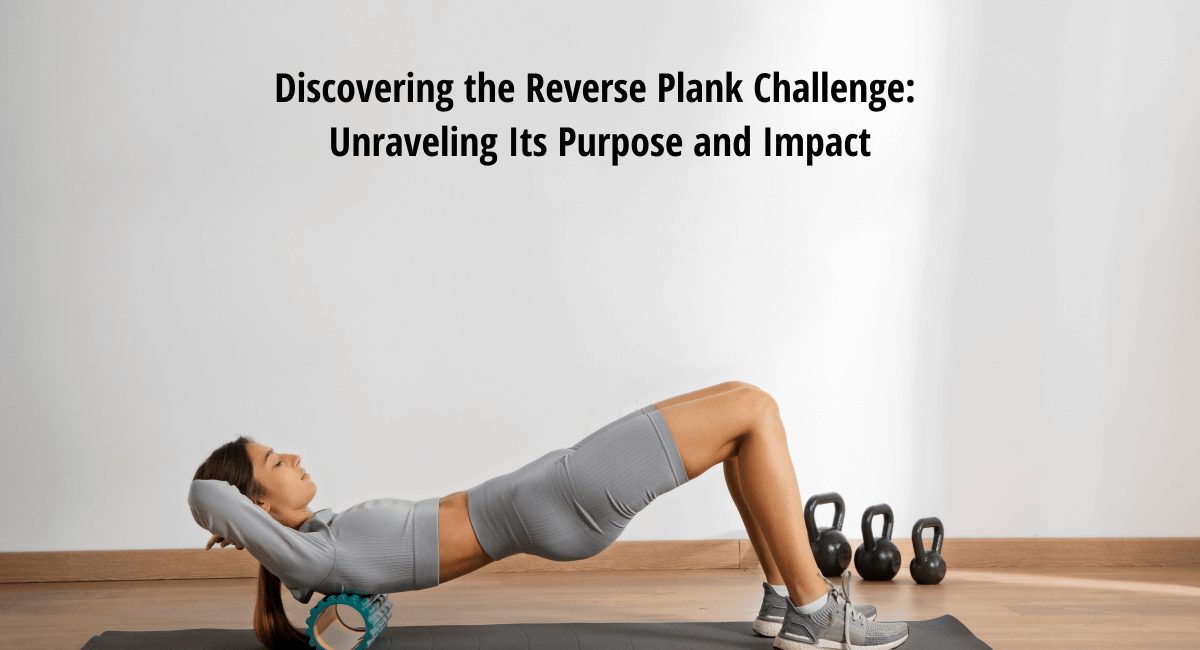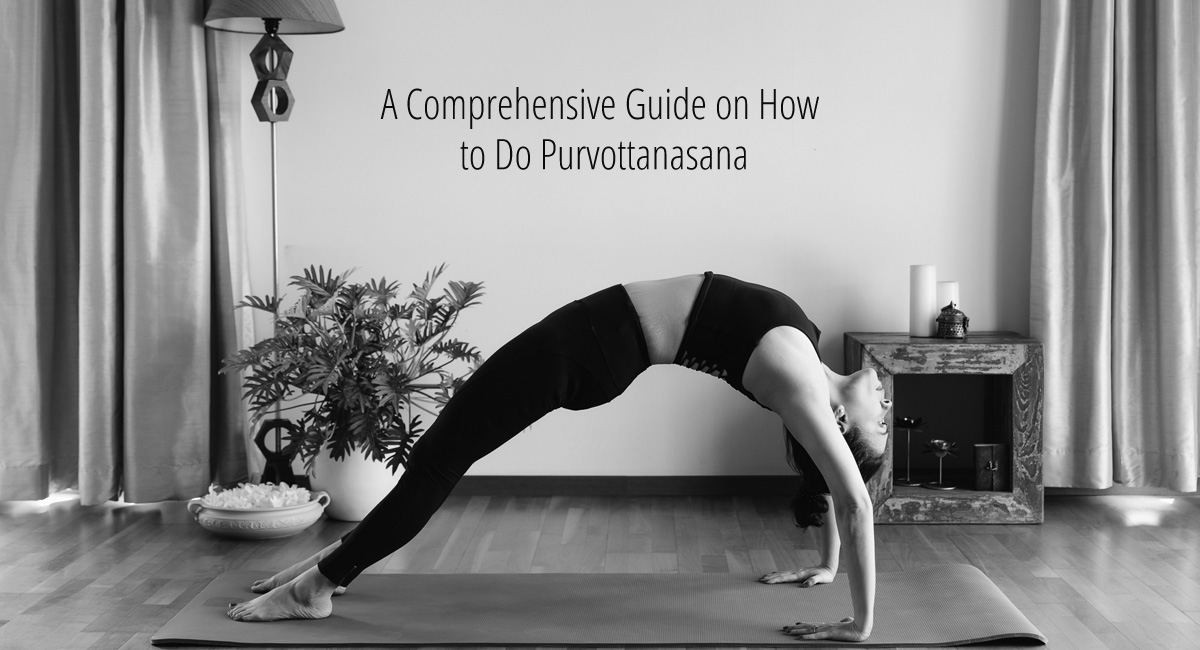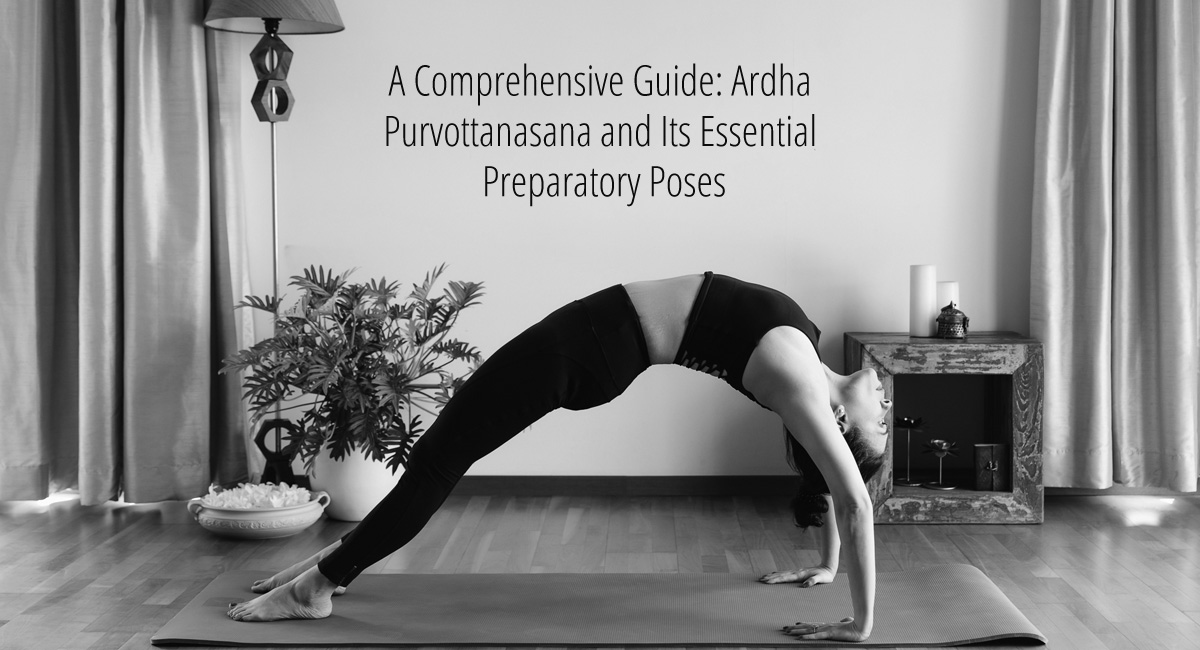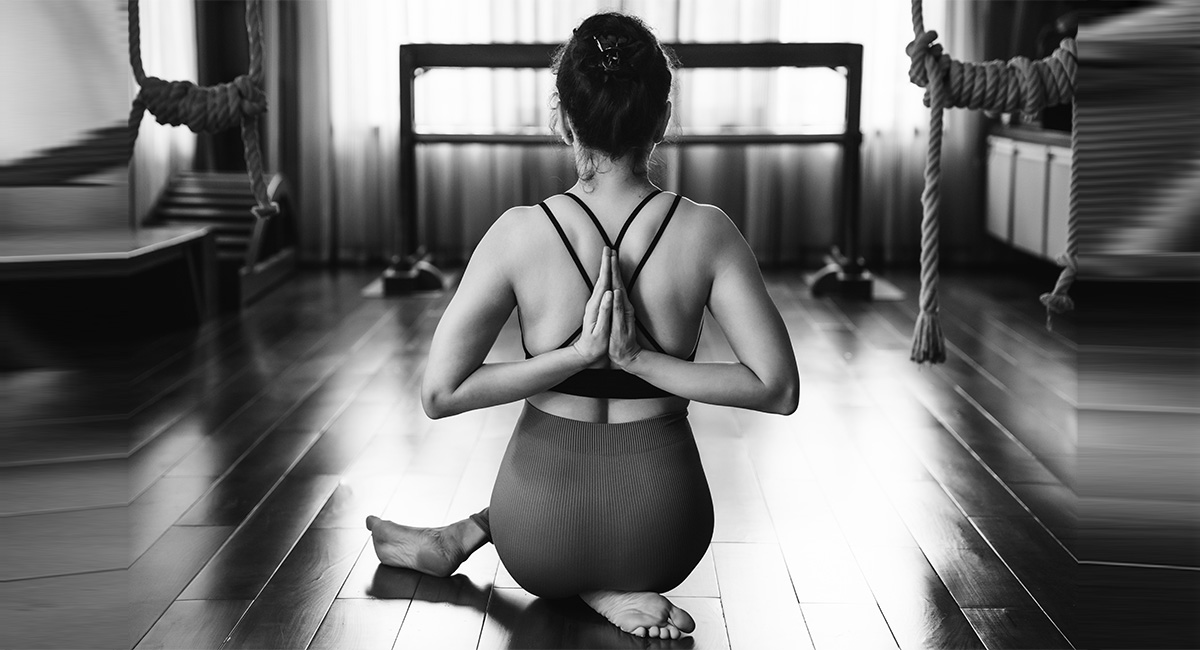
Importance Of Yoga During Pandemic
17 Iyengar Yoga Asanas on building immunity; live out these poses for 14 consecutive days and witness the transformation for yourself.
A beautiful thought that completely resonated with me, “Letting go is the hardest asana, ever,” the poses in Yoga begins when you completely want to leave it because the longest journey of any person is the journey inward.
In these times of uncertainty, the only way one can build resilience is through the Power of Pause! This brings forth the momentous force, our enormous potential within. The pandemic of COVID-19 has suddenly thrown many of us out of our usual routines. You may be supporting your loved ones, working from home, taking on unexpected stress, or feeling less physically active. But have you thought that these might take a huge toll on your health and mental health?
Not many years ago, Guruji talked about bringing a good balance in our system, and that will further help support our body defenses. It is important that we take care of how to build a strong immune system while we work to address the other emotional challenges that the world is experiencing.
Have you ever experienced the vigor which we discover while we are on the mat? When you’re on a journey, it’s not always about the destination but the company that matters. Yoga mats sometimes gives me a similar feeling of the flying Aladdin magic carpet, a companion which could take me on a voyage of self-exploration, traversing the Cave of Wonders – a journey within. Do we stick with our friends who are our well-wishers? Yes! Likewise, we need to stick to our Sadhana (practice) which will help us sail through these difficult times. There should not be any ifs and buts, and it is high time that we pay attention to our body, and we ourselves can see the aftermath of making us as priority.
Guruji Yogacharya B.K.S. Iyengar, a weak teenage boy from India who began practicing yoga hoping it could improve his health and help him recover from tuberculosis, among other ailments, was born during the 1918 influenza pandemic. Even his mother was not spared the infection during her pregnancy. This had led to a very ailing early days for our Guruji. It was this ill-health that introduced him to yoga with which he has given health to millions across the world. Trained as a student of classical Ashtanga yoga, in August 2009, during the international H1N1 (swine flu) pandemic, our Sage Patanjali published a couple of immune building yoga sequences mentioned in Yoga Rahasya (vol.16, no.4, 2009). One was a vigorous morning sequence; a dynamic sequence to get ourselves moving in a positive frame of mind. The second was a quieter evening series; this sequence is designed to do 3 things: engage your immune response, uplift your mood by improving circulation in your respiratory organs and calm your nervous system.
Immune Building Morning Practice:
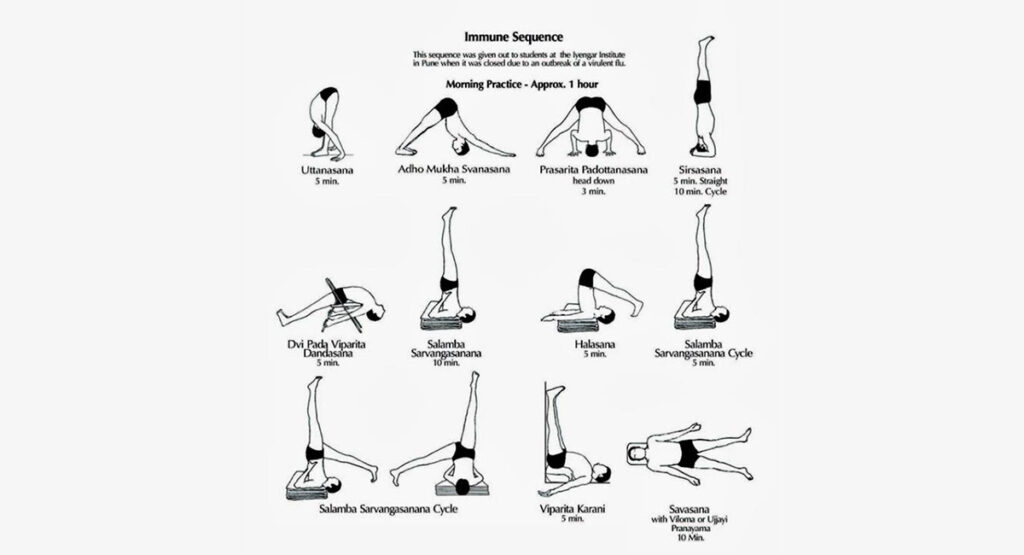
- Uttanasana – standing forward bend with head supported on a chair or block – 5 min
- Adho Mukha Svanasana – downward facing dog with head supported on a blanket or block – 5 min
- Prasarita Padottanasana I – standing wide legged forward bend with head supported on the floor or a blanket or block – 3 min
- Salamba Sirsasana – headstand straight pose – 5 min
- Salamba Sirsasana cycle – headstand with leg variations – 10 min
- Dwi Pada Viparita Dandasana – backbend over a chair with had supported on a block or blankets – 5 min
- Salamba Sarvangasana – shoulderstand – 10 min
- Halasana – plow pose – 5 min
- Sarvangasana cycle – shoulderstand with leg variations – 5 min
- Setu Bandha Sarvangasana – supported backbend with sacrum supported on a block – 5 min
- Viparita Karani – legs up the wall with hips and lower back on a bolster – 5 min
- Savasana with Ujjayi or Viloma – resting and deep breathing, with chest supported on a bolster and head on a blanket – 10 min
Immune Building Evening Practice:
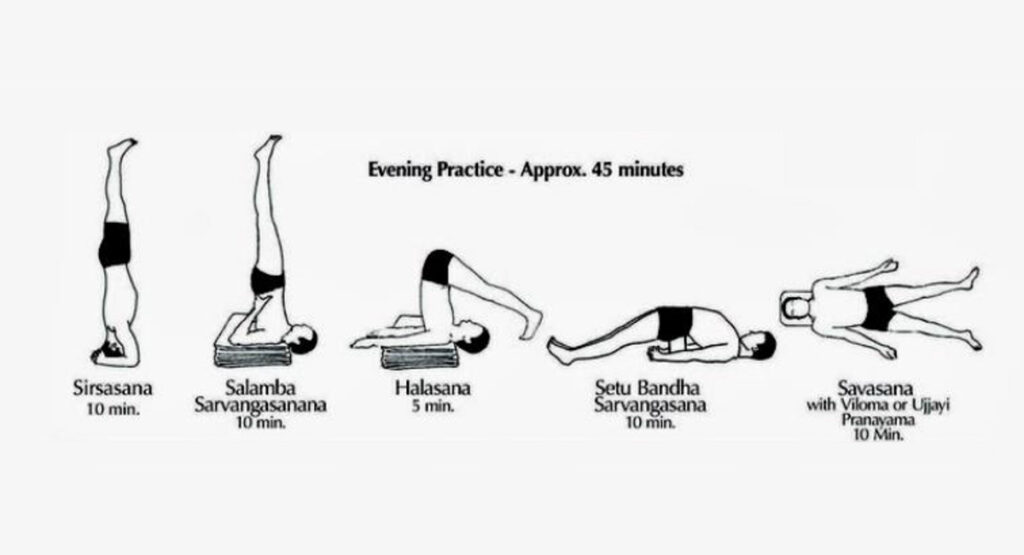
- Salamba Sirsasana – headstand – 10 min
- Salamba Sarvangasana – shoulderstand – 10 min
- Halasana – plow pose – 5 min
- Setu Bandha Sarvangasana – backbend with sacrum supported on a block – 10 min
- Savasana with Ujjayi or Viloma – resting and deep breathing, with chest supported on a bolster and head on a blanket – 10 min
The cycle below above has been given out to students at the Iyengar Institute in Pune when it was closed due to an outbreak of a virulent flu. If you are unable to do any of the asanas, talk to your local Iyengar yoga teacher to see if there are modified versions you can do at home or email @ hellothere@mrunalpawar.com for personalized batches, or visit here.
Quick tips:
- Make pranayama your priority. Either you perform before you begin your practice or at the end of the sequence. 5 main breathing exercises which should be a part of your daily routine: Ujjayi Pranayama – Brahmari Pranayama – Anulom Vilom or Nadi Shodhana Pranayama – Bhashtrika, & Kapalbhati Pranayama.
- Practice stillness. The timing—every asana needs to be held for a certain amount of time to get the maximum benefit, it’s all about the approach towards the mind through the body.
- If you have are not keeping well for some reason, don’t practice – go to bed and take complete rest. Don’t rush, take one step at a time to get back to practice; if you go too fast you might relapse.
- The series is not exhaustive. We are constantly in search of wisdom, but at this point in time what we recommend seems to be very efficient for helping those who have had the virus.
- For students who are facing serious health issues or have many complicated symptoms, then consultation is required.
- Before plunging into the practice, a 10 minute warm up practice is crucial.
- To maintain equilibrium in every pose, one needs to have a center of attention; you will be able to hold the pose for a very long time.
- Always leave a gap of 30 seconds minimum before drawing your consciousness towards the next asana.
- Do not fail to breathe even for a single second. Holding your breath while performing these asanas creates confusion and when both the parties do not cooperate, malady might surely follow.
Yoga reveals a disciplinary approach in this journey of life; it takes an existence to explore the world and the heart of Yoga. My upcoming articles will reveal more about this ancient sutra. Until then, I wish to conclude with an excerpt from the book.
Light on Life: The Yoga Journey to Wholeness, Inner Peace, and Ultimate Freedom by B.K.S. Iyengar.
“As you are doing an asana, you have to recharge your intellectual awareness all the time; that means the attention flows without interruption. The moment you collapse, you do not recharge, and the attention is dispersed. Then the practice of the asana is a habit, not an invigorating creative practice. The moment you bring attention, you are creating something, and creation has life and energy. Awareness allows us to overcome tiredness and exhaustion in our poses and in our lives. Awareness in action brings back energy and rejuvenates the body and mind. Awareness brings life. Life is dynamic, and so therefore the asanas should also be.
As I have said, while doing yoga, the body must tell one what to do, not the brain. Brain has to cooperate with the message it receives from the body. I will often say to a student, “Your brain is not in your body! That is why you can’t get the asana.” I mean of course that his intelligence is in his head and not filling his body. It may be that your brain moves faster than your body, or your body may fail to fulfill the instructions of your brain owing to lack of right guidance from your intelligence. You must learn to move the brain a bit more slowly so that it follows the body, or you have to make the body move faster to match the intelligence of the brain. Let the body be the doer, the brain the observer.
After acting, reflect on what you have done. Has the brain interpreted the action correctly? If the brain does not observe correctly, then there is confusion in action. The duty of the brain is to receive knowledge from the body and then guide the body to further refine the action. Pause and reflect between each movement. This is progression in attention. Then in the stillness you can be filled with awareness. When you ask yourself, “Has every part of me done its job?” this is self-awareness. The Self has to find out whether this has been done well or not.
Pausing to reflect on your movement does not mean that you are not reflecting throughout the movement. There should be constant analysis throughout the action, not just afterwards. This leads to true understanding. The real meaning of knowledge is that action and analysis synchronize. Slow motion allows reflective intelligence. It allows our mind to watch the movement and leads to a skillful action. The art of yoga lies in the acuity of observation.

I am a Pune based artist, Kathak dancer, Dance Movement Therapist, and an avid Yoga practitioner/ teacher. I am also the Director at the Sakal Media Group, a Trustee of Pune Blind School and Nirdhar Trust.
Being a part of Sakal Media Group, with its strong foundation of service and ethical journalism, I am deeply committed in making this world a better place by pushing boundaries, giving opportunities to others, following my convictions, helping others make better choices and to tell powerful stories that will help reshape the world we live in.



